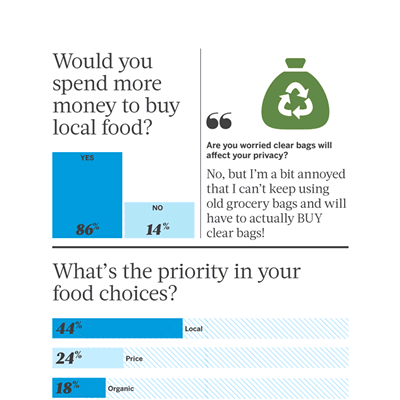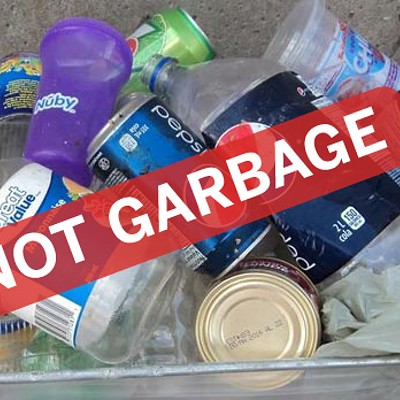It started only 5 years ago, with a couple in Vancouver. Alisa Smith and James MacKinnon, who, discovering that the average North American eats food with ingredients that have travelled at least 1,500 miles (2,414 km.), set out to spend a year only eating food that came from within 100 miles of where they live. According to 100milediet.org, they chose that distance because it was “an easy way to start thinking local,” as well as the fact it rolls off the tongue better than “The 160 km. Diet.”
What they learned was that it was hard to find a wheat farmer on the west coast and how much the seasons play a part in what we all eat, that the food they ate was fresher, healthier than they’d ever eaten, and they discovered that once they’d found reliable sources (at farmers’ markets, for example) they were able to buy in bulk and actually reduce their costs of eating. The only thing it took was time; time to find the food, time to plan and prepare for eating.
The website also details Smith and MacKinnon’s reasons for eating locally, with taste on top, certainly, but one of those key reasons is saving the planet. According to the site, “a study in Iowa found that a regional diet consumed 17 times less oil and gas than a typical diet based on food shipped across the country. The ingredients for a typical British meal, sourced locally, traveled 66 times fewer ‘food miles.’” Which would make sense, given that the UK has a fairly homogenous climate and is a great deal smaller than North America.
But we can still embrace the philosophical approach. Here in Halifax and in the region we have a number of spectacular farmers’ markets, offering the kind of natural food we all should be eating. And if we support them, not only do we reduce the environmental footprint of food production, we strengthen our local economy by giving our hard-earned coin to the little guy, the farmer who is operating a small but sustainable operation just up the road. With over 90 percent of the food we eat being shipped or trucked into the province, this is key.
You might even lose a little weight.
“We lost a few pounds apiece,” says Smith and MacKinnon on their site. “More importantly, though, we felt better than ever. We ate more vegetables and fewer processed products, sampled a wider variety of foods…eating from farmers’ markets and cooking from scratch, we never felt a need to count calories.” (For the record, 160 km by road from Halifax takes you past Wolfville in one direction, past Truro in another. Down the South Shore you can go beyond Bridgewater towards Liverpool, and on the Eastern Shore to the Sheet Harbour area. We’ve tried to keep that distance in mind as much as possible when researching this guide, to stay within it when highlighting businesses and organizations.)















